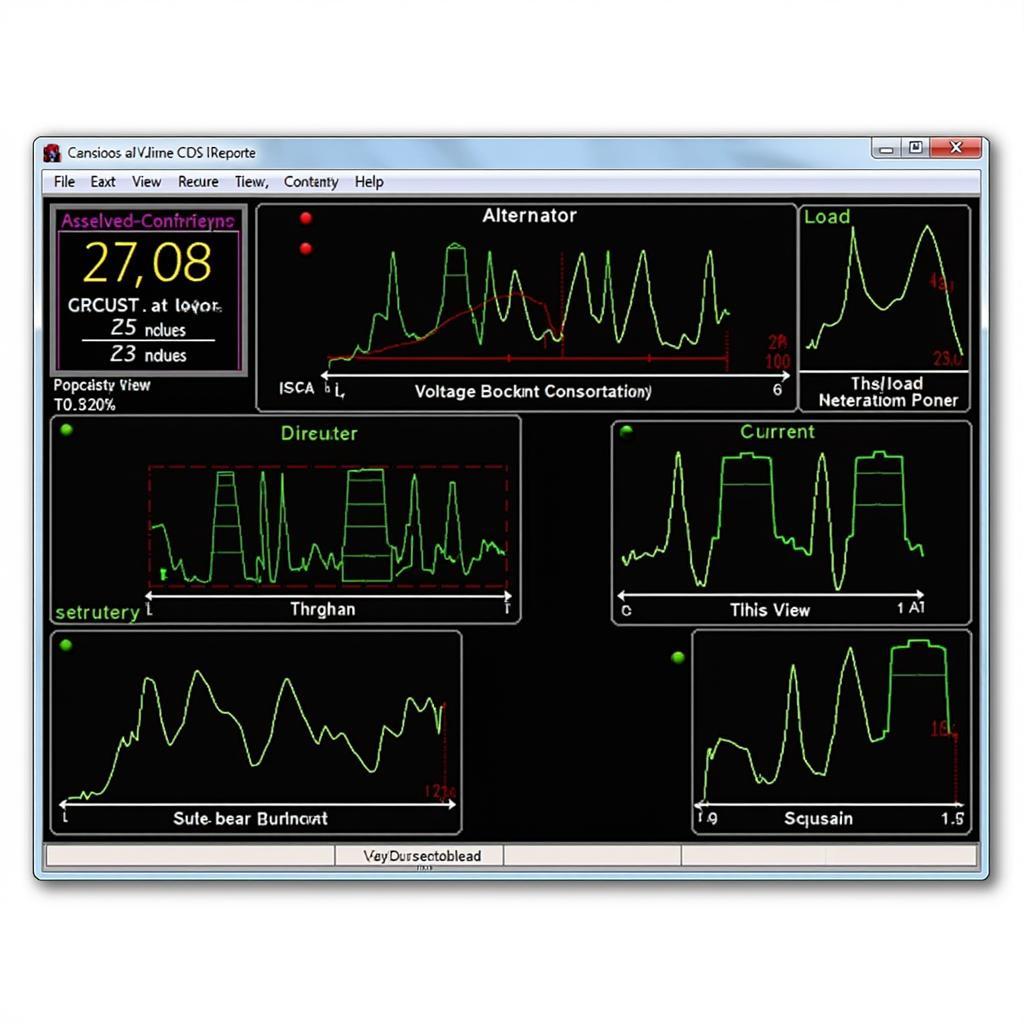Your cart is currently empty!

Mastering the VCDS Alternator Test: A Comprehensive Guide
The VCDS alternator test is an essential tool for diagnosing charging system issues in your Volkswagen, Audi, Seat, or Skoda vehicle. This guide will provide a comprehensive overview of the VCDS alternator test, offering step-by-step instructions, expert insights, and practical tips for troubleshooting alternator problems.
Similar to a vcds air conditioning measuring blocks, the alternator’s performance can be analyzed through specific measuring blocks in VCDS. A failing alternator can lead to a variety of problems, from dim headlights to a complete vehicle shutdown. Understanding how to perform a VCDS alternator test can save you time and money by allowing you to accurately diagnose the issue yourself.
Understanding the Importance of the VCDS Alternator Test
Why is the VCDS alternator test so crucial? It provides a precise and detailed analysis of your alternator’s performance, going beyond simple voltage checks. This allows you to pinpoint the root cause of charging system problems, whether it’s a faulty voltage regulator, worn-out brushes, or a slipping belt.
What’s more, the VCDS alternator test offers valuable data that can help prevent future problems. By monitoring the alternator’s output and voltage regulation, you can identify potential issues before they escalate into major breakdowns.
Performing the VCDS Alternator Test: A Step-by-Step Guide
- Connect VCDS: Connect your VCDS interface to your vehicle’s OBD-II port and launch the VCDS software on your laptop.
- Select Control Module: Select the “01-Engine” control module.
- Access Measuring Blocks: Go to “Measuring Blocks – 08.”
- Choose Measuring Block Group: Enter the appropriate measuring block group for your specific vehicle model. This information can typically be found in your vehicle’s repair manual or online forums. For example, measuring block group 005 often displays alternator voltage. Understanding the different measuring blocks available, much like understanding vcds tool box, is essential for accurate diagnostics.
- Monitor Values: Observe the displayed values for alternator voltage, current, and other relevant parameters. Compare these values to the manufacturer’s specifications to identify any deviations.
- Interpret Results: Analyze the data to determine the health of your alternator. A consistently low voltage reading, for example, could indicate a failing alternator.
 VCDS Software Displaying Alternator Data
VCDS Software Displaying Alternator Data
Troubleshooting Common Alternator Problems with VCDS
The VCDS alternator test can help diagnose a variety of alternator problems, including:
- Low Voltage: This could indicate a faulty alternator, voltage regulator, or wiring issue. Check the vcds supported battery brand to ensure compatibility and rule out battery problems.
- Overcharging: This can be caused by a malfunctioning voltage regulator.
- Erratic Voltage Fluctuations: This might point to a loose connection, worn-out brushes, or a failing diode in the alternator. Just as you would troubleshoot with other features like the vcds lite cover vcds, using VCDS for alternator issues can pinpoint the exact problem area.
- No Charging: This usually signifies a completely failed alternator or a broken drive belt.
“Regular VCDS scans can prevent costly repairs by catching alternator problems early,” says John Miller, a seasoned automotive electrical engineer.
Further Diagnosing with VCDS: Beyond the Alternator Test
While the alternator test is crucial, VCDS offers additional functionalities that can assist in a more comprehensive diagnosis. For example, you can check for fault codes related to the charging system, providing further insights into the problem. For a more specific example on alternator checks, you can refer to vcds vw check alternator.
Conclusion
The VCDS alternator test is a powerful diagnostic tool for any VW, Audi, Seat, or Skoda owner. By following the steps outlined in this guide, you can effectively assess the health of your alternator and identify potential issues before they become major headaches. Remember, a properly functioning alternator is essential for a reliable and enjoyable driving experience. For further assistance or to schedule a diagnostic appointment, please contact us at vcdstool at +1 (641) 206-8880 and our email address: vcdstool@gmail.com or visit our office at 6719 W 70th Ave, Arvada, CO 80003, USA.
by
Tags:
Leave a Reply